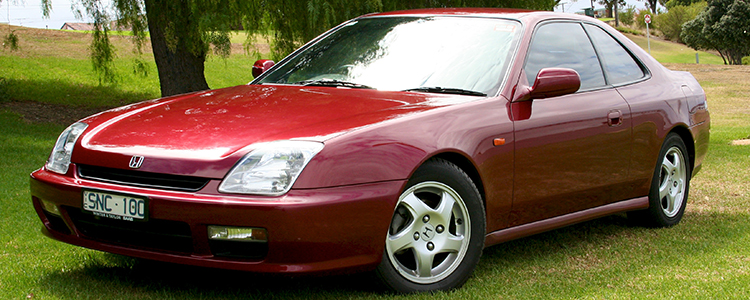Honda Prelude Buying Guide
The Honda Prelude is one of the most refined JDM cars that barely found its way to the United States. Only a few units were exported to the United States and Canadian markets. This was aimed at giving buyers a sportier and cheaper option than what Honda Currently offered in these markets during production time. However, like the Honda Civic, Honda didn’t produce the Prelude under their luxury unit, Acura, which was the case in other sports cars such as the Honda Integra and Honda Legend.
Honda built the Prelude to appeal to a younger generation of drivers. They also meant it to be as luxurious as possible without losing its functionality and performance. Thus, competing against the Mazda Cosmo, Toyota Celica, and later the Toyota Soarer introduced by Toyota to the competitive Japanese market in 1981.
In the late 1980s and 1990s, when every JDM manufacturer was in their golden age, Honda refined the Prelude focusing more on performance. They did this while retaining luxury touches such as the powered sunroof, a standard feature even in early production models. This led to the Prelude getting noticed by tuners and aftermarket companies in Japan.
Today, the Honda Prelude remains a favorite among tuners and anyone looking for a cheap, reliable, and neat JDM car that they don’t have to break the bank to buy. It’s also a common sighting in car shows, drift tracks, and drag strips like its bigger brother, the Honda Civic.
Pros and Cons
Pros
Exhilarating Driving Experience
Front-wheel-drive cars are known to be sluggish and have poor handling, but those who say that have never laid their hands on a Honda, especially Hondas from the 1990s. Early Honda Prelude model years might be underpowered, but most have the 5-speed manual transmission, a characteristic of a proper driver’s car.
Honda made the first-gen Prelude with a front independent suspension to improve handling, ensuring all wheels are parallel to the road, even on bumpy roads and when cornering. Later model years manufactured from 1988 have an independent front and rear suspension and better engine options than the first and second gen prelude; thus, they have quicker acceleration and better handling.
You can also get the Honda Prelude with all-wheel-steering and a Limited Slip Differential, which are most common in the gen-4 and gen-5 Prelude. These ensure extra grip at high speeds and on slippery roads during winter. The LSD also makes it possible to turn the Honda Prelude into a drift car, and a rear-wheel-drive conversion isn’t necessary if you have the skills and the engine makes reasonable horsepower figures.
In the 1990s, the H-series engine was introduced to the Honda Prelude, and enthusiasts claim it’s better than the B-series engine adopted from the Honda Civic. The H-series engines rev to 7400rpm thanks to the higher piston speed per revolution, which ensures low and high-end torque.
Easy To Modify
Hondas are slow when stock, but their engines can be modified to insane power levels enough to thrash just about any car. You get the Honda Prelude with E-series, A-series, B-series, F-series, and H-series engines. The last three are the most tunable, especially the H22A1 VTEC engine in the fourth-gen Prelude.
VTEC is Honda’s variable valve timing technology, similar to Toyota’s VVTi system with two cam profiles. The smaller cam profile allows lower valve lift at low RPMs, while the larger one allows higher valve lift at high RPMs allowing more air into the cylinder and increasing the combustion rate. The ECU controls the camshaft; thus, when the larger cam profile is in use, more fuel is injected into the combustion chamber to compensate for more air.
H-series engines can handle a maximum of 300 horsepower with factory internals as they respond better to bolt-on mods due to the higher displacement. Common mods include fast road or motorsport cams, high-capacity injectors, altering valve durations, chip tuning, and upgrading the fuel pump. An H22 or H23engine can easily make 700-1000 horsepower with forged internals and forced induction.
Similar upgrades can be done to F-series and B-series engines, but you won’t get much power out of them like the H-series engines. The maximum power you can get out of a Prelude with an F20, f22, B20, or B21 engine with stock internals is around 250 horsepower with stock internals and 450 to 500 horsepower with forced internals and forced induction.
Great Aftermarket Support
One of the factors that make JDM car ownership in the United States easy is aftermarket support. The Honda Prelude has enough aftermarket support ranging from performance engine parts and aero-body kits if you want to transform your Integra into a mild street racer or weekend drag car. It also shares most mechanical components with the Honda Civic, Honda Integra, and other Hondas, making it easy to swap factory parts or use aftermarket parts for other cars.
Ride Comfort
Honda isn’t known for making luxury sports cars, but they tried to some extent with the Honda Prelude. It’s not as luxurious as the Honda/Acura Legend coupe, but it has some touches uncommon in most JDM sports cars in its class. For starters, Honda offered leather seats with red stitching as standard in some model years, while others got woolen and quality fabric seats similar to those used in the Honda Legend. The front seats are well-bolstered and have enough legroom and legroom for tall drivers.
The shift knob, handbrake lever, and manual transmission shifter cover are covered with leather. It might seem normal, but the little things make driving a sports car comfortable. Door panels on top-of-the-line models are also lined with leather. The powered sunroof also comes in handy during the summer!
But it’s not only in the interior that the Honda Prelude wins over most JDM sports cars. Honda used high-tensile steel to construct the Honda Prelude’s chassis and light metallic sheets to construct the body resulting in a well-structured car that feels solid to drive.
Pleasing To Look At
The Honda Prelude is not a crowd-puller like the Honda NSX, but you can’t miss stopping and admiring one. All model years have a slanting noise merging with a sloping hood, making the Honda Prelude look great and enhancing aerodynamics. The windscreen lays back a little more than the Honda Integra and blends into the roof, which slants into the short but curvy short quarter panel.
You don’t need any extra modifications to make a Honda Prelude stand out in a car meet or parking spot in your school’s parking lot. If you bought the car without the factory wing, a neat paint job and some wheels do more than enough, and maybe a minimalistic wing.
Maintenance Costs
Time and again, JDM cars have proved to be the most reliable, regardless of being built over 20 years ago, and the Honda Prelude is no exception. Prices might be a little higher compared to other sports cars, such as the Mazda Miata, but they are justifiable for what its capable of. But buying a car is only the first step of ownership as you have to pay for insurance, gas, and maintenance, among other costs. So, what is it like to own a Honda Prelude?
Except for automatic transmission failure, there are no other common catastrophic faults that owners have complained about. Fuel and oil consumption is average, and there might be oil leaks, but this is common in most old JDM cars, and you can’t expect less of the Honda prelude. A Honda Prelude will easily last more than 200,000 miles when maintained regularly and the minor issues sorted. Honda Prelude Insurance averages between $1500 and $3000 depending on the model year and spec.
Cons
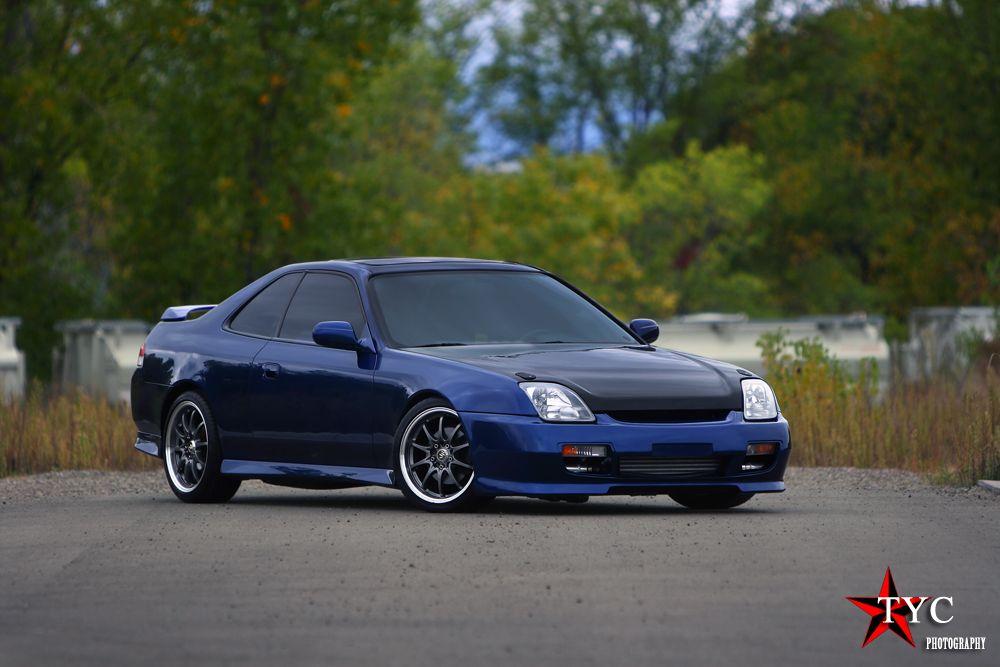
Heavy
Due to the high-tensile steel chassis, the Honda Prelude is heavy and robust. It might seem like a non-issue at first, but compared to some of the best JDM sports cars, it’s among the heaviest, especially second-gen and third-gen preludes, as some trim levels weigh close to 3000 pounds.
The weight affects drivability in a Honda Prelude as it has uneven weight distribution, with the front end being heavier than the rest of the car. Also, suspension components, tires, and brakes wear out quicker, and there’s more work to shed some weight and increase power output if you track a Honda Prelude.
Low Ride Height
The Honda Prelude has a low ride height which is great as it improves handling and traction and reduces air drag. But it puts the oil pan and the bottom plate, among other parts underneath, at risk of physical damage, especially bottoming out when driving on bumpy roads. Lowering the car, even more, can cause the tires to rub on the fenders, which causes uneven tire wear.
Common Issues
H-series Engines Burns and Leak Oil
Old Hondas are known to leak and burn oil, and in the Honda Prelude, both issues mainly occur in fourth-gen and fifth-gen preludes with H-series engines. The first cause of oil leakage is the valve cover gasket which is characterized by oil on the perimeter of the engine and a burning smell when the oil gets to the hot exhaust manifold. H-series engines have high optimum running temperatures. Thus, the valve cover gasket has a shorter lifespan than other engines.
Before replacing the valve cover gasket, check if there are loose bolts on it and tighten them according to torque requirements. If the oil leak persists, replace the valve cover gasket and ensure it doesn’t stick out when placing the valve cover on the engine. It’s also important to check if the valve cover is warped or cracked.
Another common cause of oil leaks in the Honda Prelude is the camshaft seal. Like the valve cover gasket, oil leaking from the camshaft seal is characterized by a burning smell and smoke when oil lands on the hot exhaust manifold. You’ll also notice oil below the camshaft cover and on the ground if you’ve parked in a particular spot for a long time. Replacing the camshaft seal is unnecessary if there are just oil spots, but the leak might worsen, affecting reliability due to oil starvation.
If there are oil puddles underneath the car away from the engine, your Honda Prelude probably has a worn-out oil pan gasket or oil filter adaptor seal. Most owners don’t replace the oil pan gasket, and it’s susceptible to wear and tear like other gaskets. There are no specific intervals for replacing the oil pan gasket, but a cork oil pan gasket will last longer than a rubber one.
Also, due to the Honda Prelude’s low ride height, the oil pan might have holes and dents that oil leaks through, especially if the car is driven on rough roads. Oil leaking from the oil filter adaptor seal is an easy fix, as you only have to tighten the oil filter. You might have used the incorrect one if oil leaks continue after tightening.
Faulty Automatic Transmission
Transmission failure is common in Honda Preludes with the Sport Shift automatic transmission, with most cases reported in fifth gen Preludes. Early signs of a faulty automatic transmission in a Honda Prelude include jerking after engaging the drive and reverse gear, freezing, and slippage.
From owner forums, attempting to fix the automatic transmission on a Honda Prelude can be a pain in the neck and pocket draining. Thus, most owners just let it slowly die but maintain regular maintenance to increase its life span while hunting for a manual transmission swap.

Rust
Hondas are some of the cars most susceptible to rust due to their poor build quality, among other factors. On the Prelude, rust mainly occurs on the wheel arches, quarter panels, and body panels, especially if there are signs that the car has been repainted before or if the body panels have mismatched paint. Check for cracks and dents on the paint and tap the body panels gently while feeling for Bondo. Some owners fill rust patches with Bondo and paint to sell the car, only for the rust to become more profound into the metal.
Due to old age, the weather stripping on the tail lights and door seals allows water to seep through and accumulate in the spare tire well, rear seat, and front seat footwells, causing rust. Water leaking into the headliner through the sunroof weather stripping is also common in the Honda Prelude. It might cause electrical faults, the headliner will sag, and water patches will form after the water dries.
Interior Quality
You might have found the perfect Honda Prelude, but issues such as a disintegrating interior are unavoidable when buying a 25-year-old JDM car. Due to old age and constant use, door locks and handles start jamming, and you have to open the door from the outside or inside, depending on which side works.
Some trim levels also come with powered windows and sunroof, occasionally leaving you covering the window with paper as the only option when it rains. Also, you’ll rarely get a Honda Prelude with cupholders, but such issues make JDM car ownership an exciting daily adventure!
Average Prices
For around $10,000, you have a Honda Prelude but a base-spec model or a running project car that slowly builds to your liking. Mint Preludes sell for figures above $15,000 but rarely exceed $30,000 unless you buy someone’s already-built project car with tasteful mods.
What To Look For When Buying A Honda Prelude
A couple of factors determine whether you should buy a Honda Prelude. Avoiding high mileage Preludes, especially fifth-gen-preludes with the Sport Shift automatic transmission, is advisable. It’s known to develop issues at around 70,00 miles and fail shortly before or after hitting 100,000 miles. On Preludes with a manual transmission, ensure seamless gear changes without grinding or slippage.
Also, it won’t be long before the suspension, powertrain, and drivetrain components need to be replaced due to wear and tear. Only buy a high-mileage Prelude if it’s a solid bargain compared to others in the market or if it has upgraded components that will last several hundred miles before you need to replace them.
Inspecting the engine bay should be done after a test drive to check for fluid leaks, especially oil leaks on Preludes with H-series engines. During the test drive, ensure that the gas, brake, and clutch pedals are not spongy. If buying a second-gen or third-gen Prelude, ensure the pop-up headlights work.
Checking the car’s overall condition and asking for proof of ownership and maintenance records, if available, is also essential. The car might seem perfect at first, but you might spend more trying to rectify issues you could have avoided if you had inspected the car thoroughly.
Comparable Alternatives
- Honda Integra (Buying Guide)
- Toyota Celica (Buying Guide)
- Mazda Cosmo (Buying Guide)
- Toyota Soarer (Buying Guide)
- Nissan Silvia (Buying Guide)
- Nissan Fairlady Z (Buying Guide)
- Honda Civic (Buying Guide)
- Honda Accord
- Mitsubishi Eclipse
- Mitsubishi GTO
Models and Specifications
1978-1982 Honda Prelude (SN)

Honda began designing the Honda Prelude as early as 1976 based on the Honda Accord and launched it in the Japanese market in 1978, but it was shorter than the Honda Prelude. However, most mechanicals, such as the independent four-wheel struts, brakes, and engine options, were borrowed from the Honda Accord. This was aimed at reducing manufacturing costs to lower the price of the car, which was one of Honda’s successful marketing strategies.
The first-gen Prelude offered only two engine options: a 1.6-liter SOHC engine and a 1.7-liter CVCC engine coupled to a 2/3-speed automatic or 5-speed manual transmission. Few JDM manufacturers offered the 5-speed manual transmission option in economy cars in the late 1970s and early 1980s.
Different trim levels were offered with varying luxury features. For example, the Executive trim got a powered sunroof, AM/FM radio, leather seats, and power steering. The first-gen Honda Prelude received a minor interior facelift on the instrument cluster and the dashboard before being discontinued in 1982.
1982-1987 Honda Prelude (AB, BA, BB)
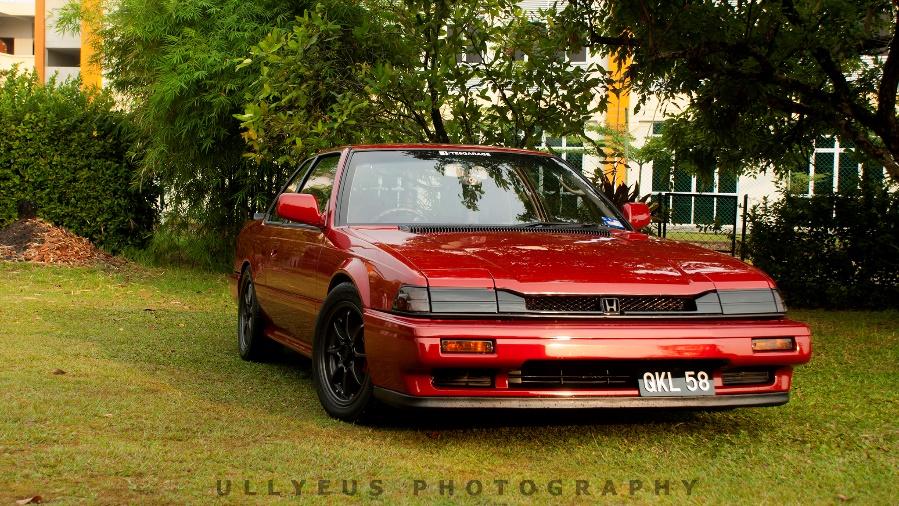
1982 saw the introduction of a new, more extended platform for the Honda Prelude, which had been conceptualized earlier in 1979, shortly after Honda began production of the first-gen Prelude. Honda discontinued the engines used in the first-gen and replaced them with two 1.8-liter and two 2.0-liter engines. The 5-speed manual transmission was still in use, but only one automatic transmission was offered in the second-gen Prelude, a 4-speed automatic.
Honda wanted the sporty appeal that the first-gen Prelude lacked for the second generation, as it was considered a sports coupe more than a luxury coupe. This led to a new, streamlined front end with a sloping hood to improve aerodynamics and a lower ride height to reduce drag.
More Honda Preludes were exported to the US and Canadian markets, including the newly introduced Si (Sport Injected) spec, which has the 2.0-liter B20A DOHC engine. Other second-gen Honda Prelude trim levels include the SE (Special Edition) and 1.8L twin carb.
1987-1991 Honda Prelude (BA4)
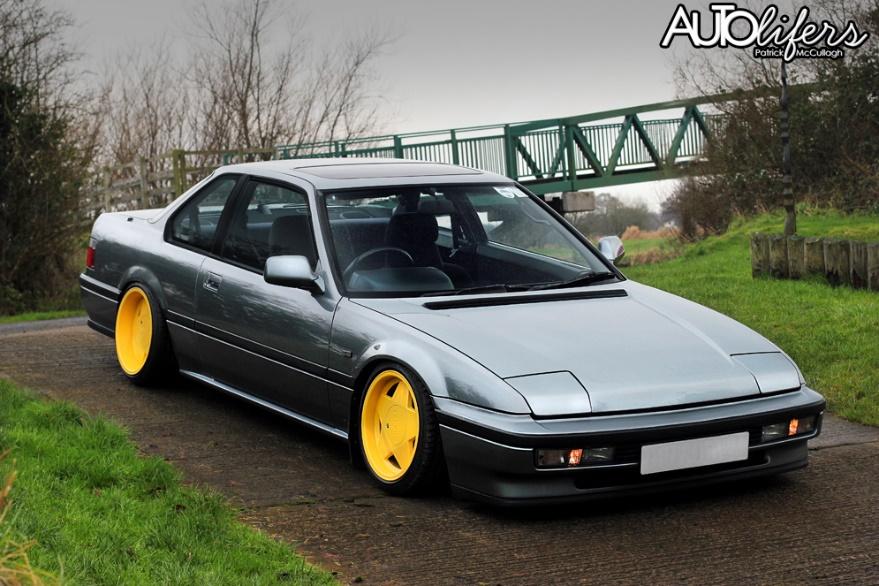
Some enthusiasts will say that the third-gen Prelude is the best-looking generation among others, mainly due to the pop-up headlights, and they might be true. The pop-up headlights on the third-gen Prelude resulted from Honda’s effort to improve aerodynamics as if the slanting hood and wedged-out front end weren’t enough. As a result of the design process, when designing the Honda NSX, the third-gen Prelude got roof pillars which significantly improved body rigidity.
But pop-up headlights and the roof pillars weren’t the only exciting features that Honda introduced in the third-gen Prelude. In 1987 they came up with a mechanical four-wheel-steering system that used a shaft to connect the front steering rack to a slider on the rear axle. Four-wheel-steering was optional in Preludes sold in all markets, and in 1988 the Honda Prelude became the first car in the United States with 4WS.
Transmission options remained similar to the ones used in the second generation, but Honda discontinued all engine options except the 2.0-liter B20A DOHC engine. You also get the third-gen Prelude with the SOHC variant of the B20A and a 2.1-liter B21A DOHC engine.
1991-1996 Honda Prelude (EG5, EG6, EG7, EG8, EG9, EH1)
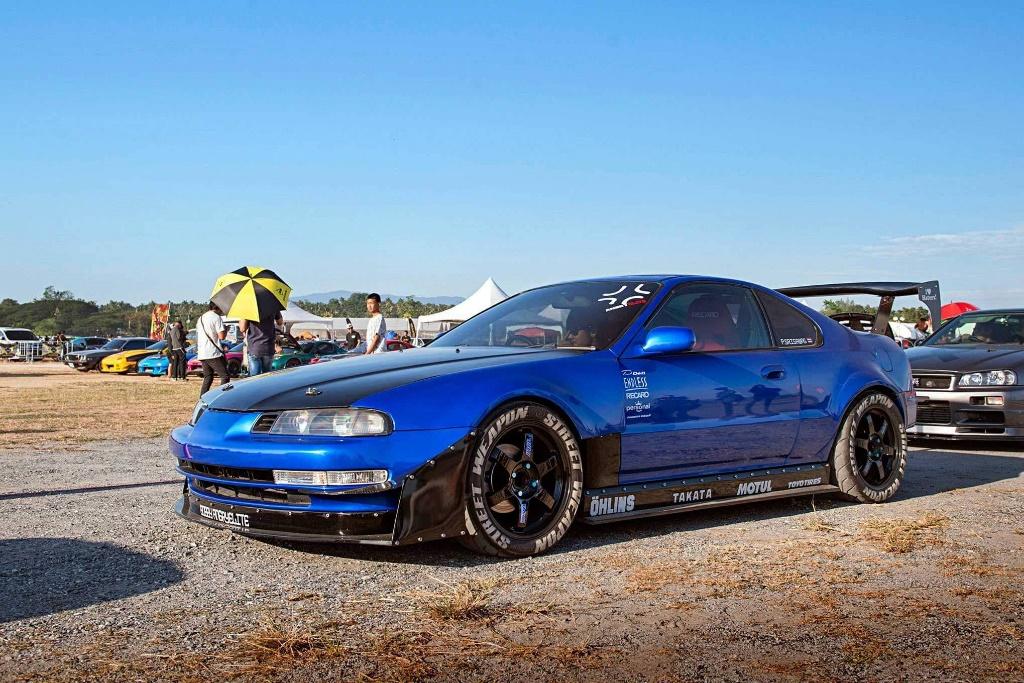
The fourth-gen Honda Prelude was unveiled in Japan in 1998 with F-series and H-series engines to replace the B-series engines used in the third generation. Honda also upgraded the four-wheel-steering system from a mechanical slider to a computer-controlled electric motor steering the rear wheels. Honda didn’t change the transmission options but upgraded the 5-speed manual transmission with a short throw shifter.
Base spec variants have SOHC and DOHC non-VTEC engines, while sportier trims such as the Prelude 2.2i, VTEC, VTi-R, and SV-R got the H22A1 VTEC engine, which was the only VTEC engine Honda used in the gen-4 Prelude. All trim levels with VTEC engines got leather seats, a powered sunroof, high-quality stereo with a subwoofer, and bigger brakes. Depending on the market, they also got powered and heated mirrors, a center dash speaker, heated seats, and a digital climate control system.
Due to safety regulations, the pop-up headlights were replaced with thin elongated headlights that didn’t affect the Prelude’s aerodynamics. The headlights had functional vent openings on the sides directing air to the bigger radiator, and the Honda badge was moved to the bumper, unlike in the third generation, where it was mounted on the hood. Unknown to many, the fourth-gen Honda Prelude graced the 1994 Japanese Grand Prix as the second official F1 safety car.
1996-2001 Honda Prelude (GA3, RH1, RH2)
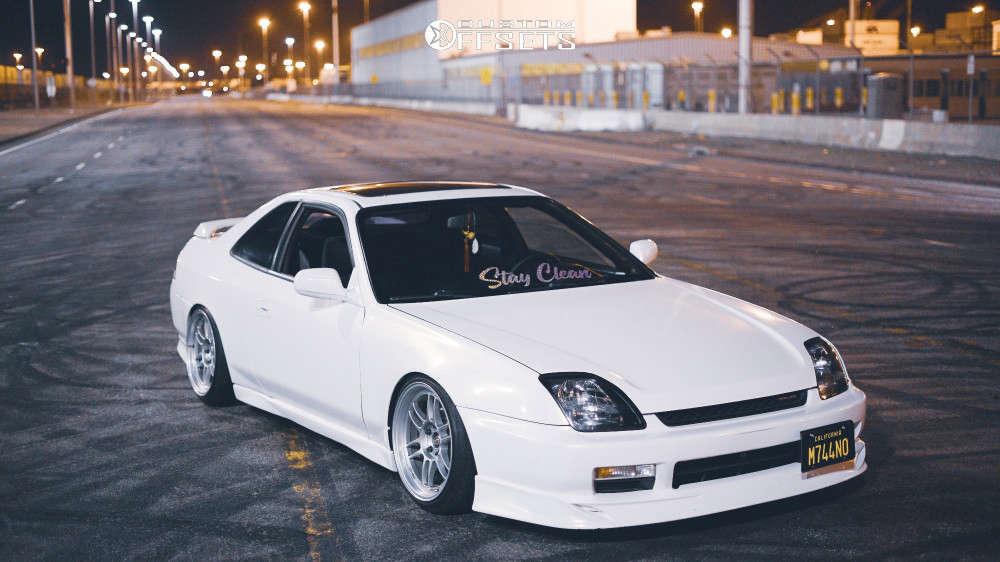
There was a decline in sales for the gen-4 Prelude, but despite that, Honda was still determined to produce the fifth generation, and they unveiled it in 1996. They introduced a new 4-speed Sport Shift automatic transmission, retained the 5-speed manual transmission, and the F-series and H-series engines, excluding a few.
The 2.2-liter H22A1 VTEC engine was only used in the Japanese-exclusive Prelude Type S. The Prelude Type S also got other exclusive features, such as an optional Alcantara interior, seat lettering, and active ABS. Performance safety and handling upgrades in the type S include Active ABS, sport-tuned front suspension, torque vectoring, and a larger exhaust.
All trim levels with over 200 horsepower got new 5-lug hubs and 16-inch alloy wheels. Other variants still got the 5-lug hubs but had 14-inch steel wheels, but buyers could opt for the larger alloy wheels for extra. Some Canadian market Preludes got carbon inserts in the interior and heated leather seats like US market preludes. In 2001 Honda discontinued the Honda Prelude, roughly 21 years after it was first produced, bringing total production figures to 826,082.
FAQ
The Honda Prelude is one of the most reliable JDM cars. Maintenance costs are minimal and can be done from the comfort of your garage if you want to save some cash. Fuel and oil maintenance might be higher than your average Miata, but it’s nothing too ridiculous that makes the fuel pump and the auto store your best friends.
Front-wheel-drive drifting isn’t a walk in the park, but it’s possible if you have the skills. Converting a Honda Prelude to a rear-wheel-drive drift car makes it easier to drift and learn with, especially if you are a beginner.
The 1996-1998 JDM Prelude type S with the 2.2-liter VTEC engine mated to a 5-speed manual transmission is arguably the best Honda Prelude. It might be rare as it was only made for the Japanese market in limited numbers, but a car worth buying over most sports cars in its class.
All Honda Preludes are built on front-wheel-drive platforms, and there are no rear-wheel-drive or all-wheel-drive Preludes.
The Honda Prelude engine bay is large enough to fit 4-cylinder, 6-cylinder, and 8-cylinder engines. Common engine swaps include Honda K-series engines, Toyota 1JZ and 2JZ engines, and large V8 engines varying from Toyota UZ series and LS engines.
The Honda Prelude isn’t a rare JDM car. Only a few trim levels, such as the Prelude Type S and VTi-R, are rare since they were made for specific markets in limited production numbers.
The Honda Prelude is not rear-wheel-drive, but it has rear-wheel-steering available in some Prelude trim levels manufactured after 1987.
When maintained regularly, a Honda Prelude can easily last for approximately 200,000 miles before needing major mechanical work. However, if you have one with an automatic transmission, there’s a chance it will fail before hitting 100,000 miles.
How To Import A Honda Prelude
Read our Ultimate Guide on How to Import a Car from Japan.

